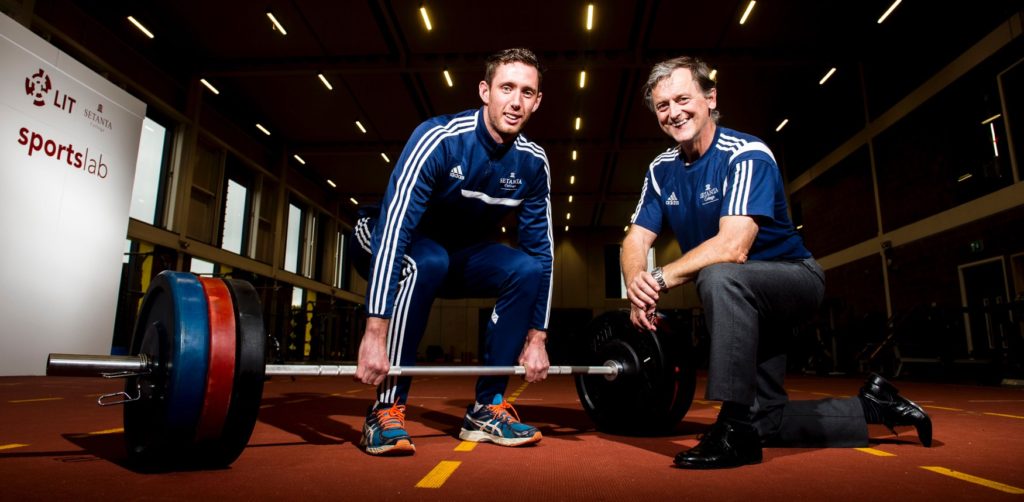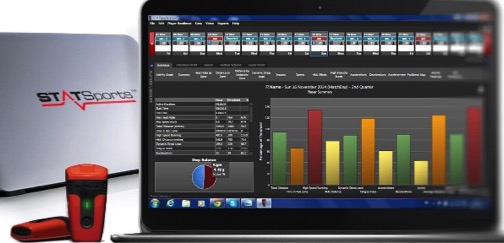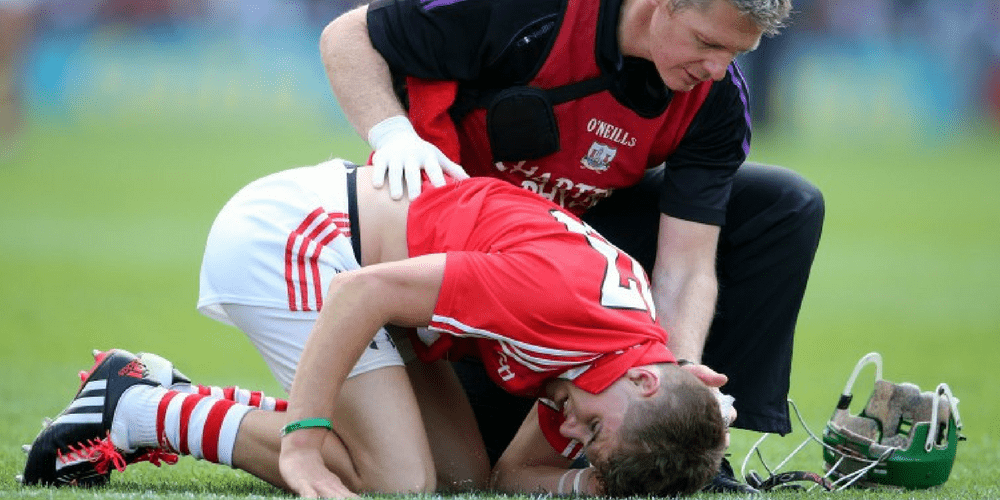Liam caught up with Damian Lawlor of RTÉ Radio to discuss the challenges facing GAA players on the county stage.
Stay tuned to the Setanta College blog over the course of next week to hear Dr. Liam’s view and the effects of these challenges on the players, teams and coaches of our Inter-county teams.
Question: There can be huge gaps between League and Championship GAA games; might this give rise to over-training? What is your view?
Answer: The gap is there alright with 10 to 12 weeks between competitive games for some teams. However, they are the cards that each county team set-up has to manage. So regardless of the issues and reasons as to why this gap is there, and I am sure there are administrative reasons for this, this presents an interesting challenge for management and players alike. The bottom line is this gap period has to be well managed. The systems and technology is there and available for all counties to have a well-managed gap or countdown programme in place. This will be key to whether a team comes through this well prepared to perform in the championship. So what is the basis of this plan? It involves using the workload which consists of all training, practice and challenge matches and any other physical work that the player is exposed to, to guide the plan. The interaction with the clubs is also a key issue and this workload should be calculated into the overall workload equation. The ultimate goal is to ensure that the team arrives fit, injury free and ready to perform on the important day.

Pic: Liam Hennessy with Setanta College Tutor and Kilkenny hurler, Michael Fennelly
Workload monitoring is crucial
Practically how does this work? Well, it means starting at the beginning of the year and planning the programme and, in particular, the workload tolerances of the players. By that I mean the actual running volume and the speed of running including accelerations and deceleration as well as total work completed by a given player and that he or she can tolerate without being at a high risk of injury or overtraining. Crucially, this must include the player’s work outside of the county set-up including club, college workload involvement and this is a most challenging task as many inter-county players have several masters to contend with.
The bottom line is that a well-managed inter-county team should have all the workload metrics regardless of where the work occurs, recorded and centralised throughout the whole year. Ideally a county should have a complete history of all players’ workloads over several years. This is actually now possible to do and has been possible in a systematic way for several years now. Yes, it is easy to do this within a profession team sport such as within rugby and soccer, but while there are communication and co-operation challenges no matter what team sport, the systems are there and there is nothing stopping a player nowadays from accurately self-reporting his or her workload.
GAA is unique in that players do not leave their county to play with another. Thus, county workload recording is definitely doable. And while some players may play club in one county and inter-county in their native county, it is still relatively easy to track player workload, no matter where he plays club, college or county games. A few issues do make life awkward such as where managers and coaching staff change regularly then this presents a problem. This may result in sharp changes in workload practices, irregular workload volumes that may not be suited to the players. An ideal situation would be to have a standardised and consistent system of workload monitoring in place regardless of the change in management – and this is very achievable in each county. Create a system that allows better player welfare and workload monitoring, start at age grade level and train all coaches involved in the development of players in the principles, methods and practices of better workload monitoring. Then in periods like the 10 week gap – the specific workload that allows the player to maintain or develop fitness in this period can be easily worked out. This gives clear guidelines to all – but this is based on good planning that occurs well back in the early planning stages before pre-season. Again, I must emphasise that this is all centered around careful workload monitoring of the player, on the buy-in from the policy makers in the county and obviously the players. But once in place it will yield huge benefits. The tools and knowledge are there to do so. I would say to the key stakeholders, be brave, do not fear technology or change, embrace them, now get working on educating players how to self-report all their workloads, and integrate into a central county system, this will serve you well.
Examples of workload tracking systems

© Image from www.statsports.com
A simple example of an easily used workload tracking system, includes session RPE and session duration records. These figures are easily recorded on paper on the night of training or now on simple iphone apps that are commonly available. I am aware of a number of counties who use such a system and have great buy-in from players – this ensures that all workload no matter where it occurs is tracked, recorded and stored. Also, depending on budget there are other options for detailed monitoring of all match play and indeed outdoor training and practice, for all teams and grades. GPS tracking and monitoring systems have been with us in Ireland for over 15 years now. These small devices have been shown to be most useful in monitoring not only the players total outdoor workload but also in assisting to predict injuries.
So, if the gap persists in the period from league exit to championship start, this type of player monitoring using either or both systems will add huge value to the way players are better managed so as a) to reduce injury risk b) maintain and advance physical and mental fitness as well as mental readiness to play and c) be ready to perform on the day that matters.
To provide more concrete guidelines here are some key ‘do’s and don’ts’ that we could use to help the coach better prepare for the championship in this ‘gap’ between league and championship period.
Five do’s and don’ts that will help get through the gap period
1. Don’t do extremes. This simply means that if the manager and support staff see the gap period as a period where they can train harder and more frequently in the belief that if they get extra work in and then ease off, then they will be better prepared. Nothing can be further from the truth. We call that ‘spiking ‘ and that is what happens when many teams go into camp or go to a training camp in this period. Spiking is where the workload increases significantly say in a week compared to what the team is familiar with. Ironically, the team that does this ‘workload spiking’ can expect more injuries after this spiking phase. Camps and training camps especially within 6-8 weeks of an important championship can present more problems than any benefits especially if the team, and that includes the management, is not accustomed or experienced in this.
2. Don’t over do sprinting. Frequently, this time of the year the ground gets that bit harder and along with the better weather, there is a tendency to get more speed training into the programme. This is understandable, we all did it. However, we now know that doing more speed work – another type of ‘spike’ in the programme of work but now in terms of training intensity – can then lead to more injuries subsequent to this training.
3. Use Taper. Tapering is reducing training volume in the period before the championship or important match. This is a well tried and tested method of being at peak fitness – both in mind and body – however, it is often haphazardly applied. It can only be properly used when the team has built up for at least a full year a workload profile of all players. The load that is normally tolerated for maintenance of fitness is then used in calculating the appropriate tapering period and dose. Usually a 20 percent taper will occur in the second week out followed by another 20-30% taper in the countdown week. The key point here is that while each team is different and the taper has to be specifically shaped from their previous workloads, the reduction in overall workload but not intensity is the guiding principle.
That leads me to another don’t:
4. Don’t Copy: A manager or coach will feel a lot of stress and pressure when he or she feels that maybe the team has not worked as hard as another team and they can make up for this in the gap period. That’s simply bad planning for the outset. Yes, we all did this and perhaps that’s the real learning – we tend to best learn from mistakes. The best advice we can give is if thinking of copying another team’s preparation, pause for a moment – take several relaxed breaths and ask do you trust yourself, your support staff, your players and the plan. Let the workload programme and the countdown programme be informed by the tolerance levels of your players and not another group or team. Yes, this is often about trial and some error – but trial can be done within house based on the players within the squad. Copying what another group did is dangerous.
5. Get more Sleep: The best recommendation of all that we can make in this gap period, is for the manager, coach and his or her players is get more and better sleep during the gap period. We now know that adding about 35-40 minutes extra sleep a night will result in a player being able to perform better in terms of reaction, endurance and skills compared to taking a normal night’s sleep over a 7 day period. Also, we know that when a player periodises sleep, as in gets more than his or her normal quota, he or she is less inclined to be moody and to get ill. Further, we know that with at least a week of additional sleep per night (35-40 minutes extra), we have shown that not only does big day competitive performance improve but recovery after the big match day is speeded up. Here is a simple question: how many teams are trained to sleep better and longer? Doing so is not expensive, its natural and its perhaps the best form of recovery and preparation to ward off injury, illness and to promote optimum performance.



Leave A Comment